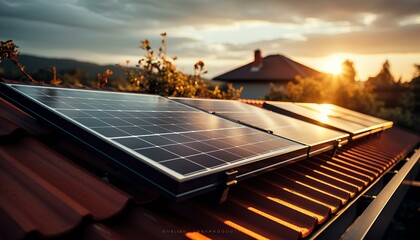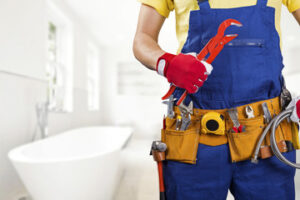Solar panels are a great way to reduce your energy costs by producing free, clean power on your rooftop. They also boost your home’s value and offer a tax credit.

Choosing the best solar panel brand depends on a number of factors, including price, energy needs, and aesthetics. Some brands are better suited for certain climates than others.
Solar panels harness the power of the sun to produce energy for your home. This is a clean energy source, as it doesn’t emit any greenhouse gasses during its production or use. It is also a sustainable energy resource, because there is no need for mining or refining fossil fuels to obtain it. However, there are some drawbacks to solar energy, including the manufacturing process, the materials used and its disposal.
The solar cells in your home’s panel are a type of semiconductor that converts sunlight into electricity using photovoltaic effect. The semiconductor is made of a series of layers, with each layer having an n-type layer with an excess of electrons and a p-type layer with a deficit of electrons. The electrons are knocked loose by the light, allowing the semiconductor to generate electricity. The electricity generated by your solar system can be used to power all your appliances and lighting in your home. You can also feed any extra electricity into the main power grid for others to use.
Another benefit of solar energy is that it doesn’t create air pollution, which can lead to health problems such as chronic bronchitis and respiratory and cardiovascular issues. Widespread solar adoption would reduce nitrous oxides, sulfur dioxide and particulate matter emissions, which contribute to climate change and can worsen the effects of natural disasters.
One other benefit of solar energy is that it does not require much water to generate electricity, which is a major advantage in regions with water shortages and drought conditions. This is in contrast to traditional power plants, which require large amounts of water for cooling and other processes.
Many local governments offer additional tax benefits for homeowners who install solar panels on their property. These incentives can reduce the cost of solar panels and make them more affordable. These benefits include solar investment credits, rebates and property tax exemptions. Some of these incentives complement federal initiatives, creating a more tailored approach to incentivizing solar adoption.
Solar panels are a powerful energy source that can help you become energy independent and save money on your electric bill. They can also add value to your home and increase your home’s energy efficiency. Furthermore, they are easy to maintain and have a long lifespan of 25-30 years. Moreover, the materials used in solar panels are recyclable and can be reused again.
They’re affordable
Solar panels are a great investment in renewable energy for both homeowners and businesses. They can save money on electricity bills and add value to a property. Additionally, they can reduce greenhouse gas emissions and air pollutants. They also help conserve water and preserve biodiversity. In addition, they can be used in a process known as net metering to sell excess electricity back to the grid.
When shopping for solar panels, it is important to compare the wattage output, efficiency, size, and price of different models and brands. This will allow you to find the best fit for your home or business. Additionally, you should consider any available government incentives or rebates that could lower your purchase cost.
The price of a solar panel is largely determined by the materials and components that it uses. Cheaper solar panels are typically made from lower-grade components and are more prone to breakdowns and failures. They may also be less efficient at converting sunlight into electricity than more expensive panels. Therefore, it is important to choose a reliable brand that offers a comprehensive warranty and good customer service.
A solar panel’s efficiency is determined by the number of cells it contains, its size, and its power-producing capacity. Larger panels with more cells tend to be more efficient, as they can absorb and convert more sunlight into electricity. Additionally, a solar panel’s efficiency is impacted by its color, as darker panels absorb more light and produce more energy.
When choosing a solar panel, you should also consider the type of silicon it uses. Polycrystalline solar panels are cheaper to manufacture than monocrystalline, as they use silicon fragments rather than a single, pure crystal. They are also more durable than cadmium telluride or crystalline silicon solar panels.
Another important factor to consider when shopping for a solar panel is the amount of maintenance required. While most solar panels are fairly maintenance-free, they should be kept free of debris and cleaned regularly to ensure proper function. Some solar companies offer maintenance services, while others provide warranties that cover repairs.
They’re durable
Solar panels are an important investment that can save you money over the long term. However, there are some factors that can affect their durability. For example, dirt can interfere with the panel’s ability to produce energy and may lead to a drop in performance. This is especially true if you live in a dusty climate or near industrial sites. In addition, the type of adhesive used to mount the junction box is critical for the longevity of the module. New advances in liquid and tape adhesives help to reduce moisture penetration and prolong the lifespan of the modules.
The best solar panel brands offer high efficiencies, durable construction and trusted warranties. They also use innovative technologies like PERC and bifacial solar cells, enabling them to maximize energy production even in challenging conditions.
In fact, many of the world’s leading solar panel manufacturers conduct extensive testing on their products, including a rigorous test to determine how much power they can generate under varying weather conditions. This testing process typically involves exposing the panels to a variety of weather conditions, from high winds to hail. Generally speaking, solar panels are resilient and can resist damage from most natural disasters.
Another factor that impacts solar panel durability is the temperature. Hotter temperatures can cause the materials in solar panels to degrade faster than normal, which may shorten their lifespan. This is why it’s important to install a solar panel system that’s well insulated and designed for your specific climate.
Fortunately, if you install your solar panels correctly, they can last for decades without any major problems. Most of the time, your system will only require minor maintenance like cleaning, snow removal and debris removal. If you want to increase your system’s longevity, be sure to choose a reliable installer with years of experience and glowing reviews from past customers.
The main advantage of solar panels is that they are a clean, renewable energy source. They eliminate the need for fossil fuels, which produce harmful greenhouse gases and increase our dependence on foreign oil. They also decrease the amount of energy we consume in our homes, which is good for our environment and our wallets.
They’re easy to install
While it’s possible to install solar panels yourself, the process is usually more time consuming than most people realize. This is especially true if you have a large rooftop, as you’ll need to build scaffolding and follow safety measures. Additionally, you’ll have to get the right equipment and permits, which is why it’s generally best to leave this project to professionals.
Before starting the installation process, you’ll need to calculate your energy needs. This will help you determine how many solar panels you need and what size of system will be adequate for your home. You can use our solar sizing tool to help you with this step. It’s important to note that the system size should be based on your current and future energy usage, not just your current electric bill.
Once you’ve determined your energy requirements, it’s time to start planning the layout of your solar system. Make sure that the location has sufficient sunlight throughout the day, and remove any obstructions that may cast shadows on the solar panels. Also, consider the local weather conditions and any financial incentives that may be available.
The next step is to prepare the site for the solar panel installation. If you’re using a ground mount, this will require some excavation and trenching to comply with the National Electrical Code. It’s wise to rent machinery that can dig trenches and anchor holes to speed up the process. Once the metal substructure is built, you can begin to install your solar panels. Secure the racking rails to the support structure, and then secure each solar panel to its rail using the clamps. Remember to leave a space of 10 mm between each module to allow for linear thermal expansion.
Next, connect the PV modules to the inverter using MC4 connectors and junction boxes. You can choose to connect them in series or parallel, depending on your system design. In a series connection, the positive (+) wires of each panel are connected to the negative (-) wires of other panels. This type of wiring increases the voltage, while maintaining current.


